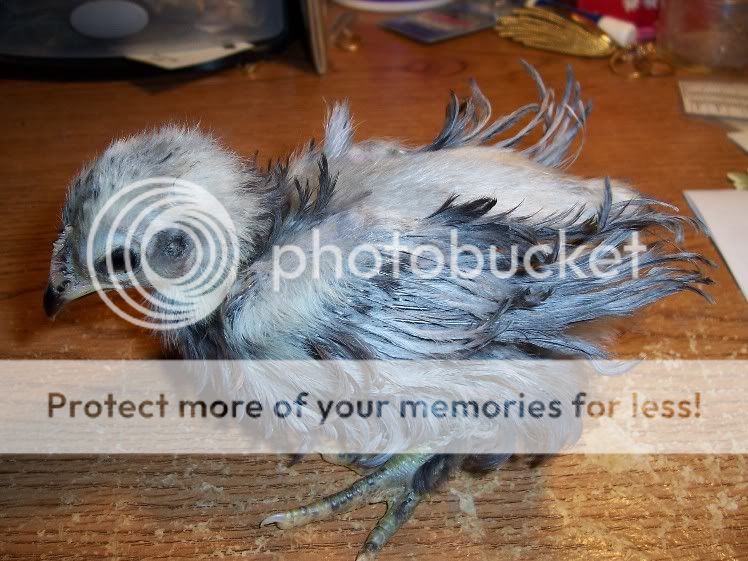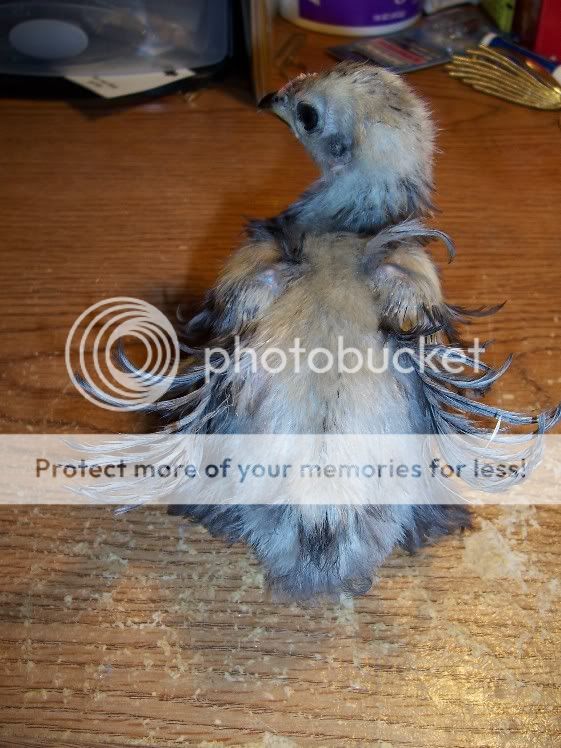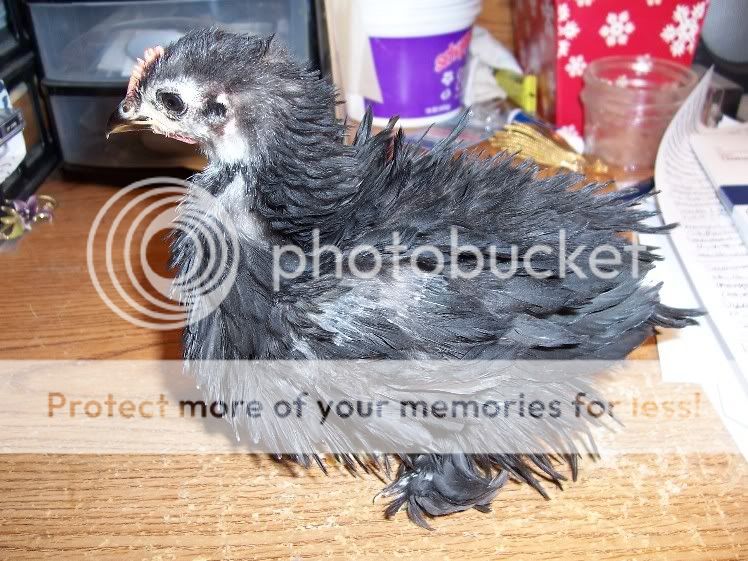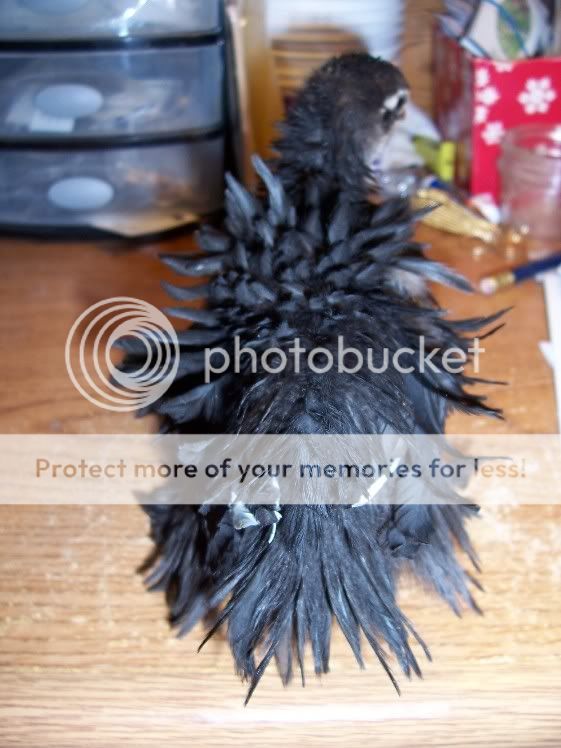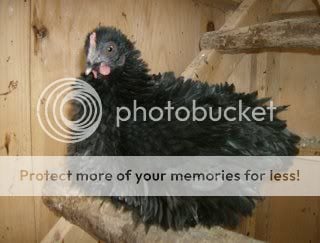Anyone interested in frizzles, might enjoy this:
Hutt's Genetics of the Fowl
In '05, I got 2 FF / homozygous / frazzled Cochin chicks in my order from IDEAL POULTRY, so I did a good bit of reading to find out what was wrong with the little birds.
They were pitiful little things
"
Secondary Effects of F.
Since homozygous frizzles are usually more
or less naked, except when a new coat of plumage has just been acquired,
it is to be expected that loss of the normal insulation would cause some
disturbances of the physiology in such birds. These have been studied in
detail by Landauer and his associates.
Metabolism. Benedict, Landauer, and Fox (1932) calculated that
even at 28CC. the heat production of frizzles was greater than in normal
fowls. At 170C. the difference was much more pronounced, and in some
of the homozygous frizzles the heat produced was more than twice that
of normal fowls. The loss of heat from the body surface in homozygous
frizzles was partially offset by an abnormally low heat loss from vapori-
zation of water, the amount of water thus lost being 30 to 35 gin. in 24
hours per kilogram of body weight, compared with 50 to 56 gin. in normal
fowls. The rectal temperatures of heterozygous frizzles did not differ
from ~those of normal fowls, but at environmental temperatures below
1500. the average rectal temperature for 10 homozygotes was slightly
lower than in controls. One would naturally expect the homozygous
frizzle fowls to eat more feed than normal ones in order to compensate
for their extra heat loss, and some evidence was found that they do so.
Other Effects. In mature, homozygous frizzles, the heart is larger and
beats more rapidly than in normal fowls (Boas and Landauer, 1933,
1934). The difference in females was 72 beats per minute, an increase
of 27 per cent over the rate for normal fowls. It was attributed to the
higher rate of metabolism in frizzles. Landauer and Upham (1936) found
that in homozygous frizzles there was an increase over normal in the rela-
tive weight of the heart, blood, spleen, kidneys, adrenals, pancreas, crop,
and gizzard and in the relative capacity of the duodenum, small intes-
tine, caeca, and large intestine. However, since the normal birds were
Leghorns and the frizzled ones were not, it is possible that some of these
differences might be associated with the several physiological traits by
which Leghorns differ from other breeds (Hutt, 1941) and not caused en-
tirely by the deficiency of plumage in the frizzled birds. According to
Landauer and Aberle (1935), the thyroid gland and adrenals of homo-
zygous frizzles are not normal in structure. The thyroid shows exhaus-
tion atrophy attributed to overwork in the effort to maintain body tem-
perature by a higher metabolism.
Landauer (1932) maintains that the hatchability of eggs laid by
heterozygous frizzles is subnormal and that it is still lower in eggs from
homozygotes, but the evidence on this point is hardly conclusive.
Significance of F and mf in Evolution.
The gene_F isn't a desir-
able one from the standpoint of a species trying to survive in competition
with others. Apart from the fact that unmodified frizzles are unable to
fly and tend to squat on the ground instead of roosting, it is clear that
the secondary effects of the mutation are more likely to shorten life than
to lengthen it. There are some indications that even under optimum con-
ditions of domestication the mortality among frizzled fowls is higher than
in normal ones. Landauer found the males to be somewhat slow in reach-
ing sexual maturity. For all these reasons, it is highly improbable that
the mutation could persist long in nature. Its preservation by fanciers
is quite a different matter.
On the other hand, the modifying gene, rnf, which to a considerable
extent overcomes the action of F and makes the plumage almost normal,
is a very desirable one. Perhaps this accounts for its presence in at least
11 different breeds and varieties (Hutt, 1936). According to Fishers
theory of the evolution of dominance, this modifying gene is exactly
of the kind that would be preserved and accumulated under natural selec-
tion. It is possible that a widespread distribution of it among the an-
cestors of our domestic fowls, even before Jungle Fowls were distributed
to the four corners of the world, may be responsible for its presence and
prevalence in our modern breeds."
Lisa






